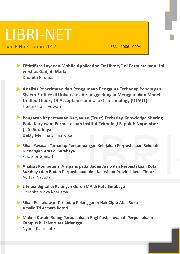Information Folia Medica Indonesiana
HISTORY
"Folia Medica Indonesiana" (FMI) is the medical journal of Airlangga University School of Medicine (AUSM). The first volume of the journal was released in 1964 under the title "Berita Research Kedokteran Surabaja". The first medical graduates of AUSM were inaugurated in December 1955. They were those who had been studying medicine under the previous medical education institution in Surabaya before the establishment of Airlangga University in 1954. The graduation of these new medical doctors improved the climate of medical education in this university. Departments were empowered with new staff. In 1959, the first specialists who were entirely educated at Airlangga University finished their study. Departments that previously lack of reliable experts, now had skilled lecturers. Moreover, an affiliation with University of California, USA, was also established in early 1960s. By this progress and the presence of new specialists, medical education in Airlangga University entered a new stage, an era of research. Therefore, the presence of medical journal was a necessity to publish the findings of various medical researches. The first edition of the first volume, January - April 1964, marked a dawn of medical scientific writing tradition in this university. It seemed that the quality of the journal itself was not unsatisfactory, as since its beginning, the journal has been listed in some of distinguished libraries abroad.
At the end of 1960s, the journal changed its name into "Madjalah Kedokteran Surabaja", which then in 1970s the spelling was adjusted to become "Majalah Kedokteran Surabaya". Passing three decades, the world has entered an era of globalization. Medical education in this country, as in anywhere else, is faced to the reality of global competition. Medical institutions should prepare their students to think, act, and compete globally. Research activities should also be oriented to the same direction. Computer-literacy and mastery of English and other international languages are therefore imperative. To cope with this challenge, in the mid of 1997 the journal again changed its name into "Folia Medica Indonesiana" (FMI). The editorial and administrative management, as well as the physical appearance of the journal itself, was improved. Written entirely in English, FMI is one of few accredited health journals in this country. As was its predecessor, FMI is published quarterly. FMI informs its readers with valuable findings in medical researches, not only those conducted by the staff of AUSM, but also those performed by researchers from other institutions nationwide and abroad. Accessible through www.fk.unair.ac.id/publikasi/folia, the journal has now widen its scope not only in traditional hard copies, but also in digital form. It is by no means that the improvement in quality is forgotten. Continuous improvement in quality by, for example, improving editorial performance and management, is a priority. To prove its capacity at global level, partnership with outstanding worldwide medical information publishers, such as ProQuest and Elsevier Publishing, has also been established. FMI is a pioneer in Indonesia for this activity. This marked another dawn of medical scientific writing tradition. Although the place of hard copies can never be totally taken by digital media, gradually the audience of medical writings will become more and more accustomed to use digital medical information, and they may use this type of information as their first choice. The audience of this digital information will also find Folia Medica Indonesiana as an outstanding source of information on the progress of medical sciences and technology. This is a challenge that worth to face.
2007-04-18, Source :












